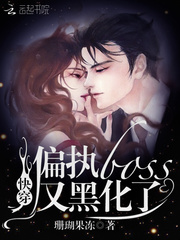第3天 情态动词和助动词
第3天 情态动词和助动词
3-1 情态动词
1.情态动词的概念
情态动词是表示能力、义务、必须、猜测等说话人的语气或情态的动词。常见的情态动词有:can (could), shall (should), will (would), may (might), must, need, dare, have to, ought to等。
2.情态动词形式变化
(1)没有人称和数的变化,第三人称单数的现在时也无变化。
I can, We can, You can, He / She / It can, They can
(2)有些情态动词有过去式,也有少数情态动词过去式和它的原形相同。
1)有过去式的情态动词有:
will —— would can —— could may —— might shall —— should have to —— had to
2)过去式不变的情态动词有:
must —— must (或had to) ought to —— ought to need —— need dare —— dare (亦可用dared)
(3)大多数情态动词后面可用动词的进行时、完成时和被动形式。
例如:can (may, must) be doing, can (may, must) have done, can (may, must) be done等。
(4)和助动词一样,情态动词后面也可以直接跟否定词not。现将情态动词的否定式及其否定式的简略式(简略式用于口语中)列举如下:
shall not——shan't can not —— can't must not —— mustn't should not —— shouldn't would not —— wouldn't could not —— couldn't dare not —— daren't need not —— needn't
3.情态动词的特征
情态动词表示说话人的语气或情态,本身有词义,但词义不完全,不能单独作谓语动词用,必须和实义动词一起构成复合谓语。
She must be your mother.
她一定是你的妈妈。(“must be + 名词”表示对现在状况的肯定推测)
Everyone should obey the rules.
每个人都应该遵守规定。(“should”表示一种客观规定)
3-2 助动词
1.助动词的概念
助动词就是协助主要动词构成谓语动词词组的动词。被协助的动词称作主要动词 (main verb)。英语中的助动词主要有:
be (been, being, am, are, is, was, were) have (has, had) shall, will, should, would do (does, did)
2.助动词的作用
助动词本身无词义,不可单独使用,它仅仅是用来帮助主要动词构成各种时态、语态、语气以及否定和疑问结构。
(1)助动词用来构成疑问句。
Do you want to achieve your dreams? 你想实现自己的梦想吗?
(2)助动词与否定副词not合用,构成否定句。
He doesn't want to share his secrets with her even he loves her so much.
尽管他很爱她,但他不愿意和她分享自己的秘密。
(3)助动词表示时态。
I will be arriving in London on time. 我将准时到达伦敦。(表示将来进行时)
I have just finished my homework. 我刚刚完成家庭作业。 (表示现在完成时)
(4)助动词表示语态。
He was sent to prison by the police. 他被警察送进了监狱。(表示被动语态)
You know my father hates being interrupted.
你知道我爸爸不喜欢别人打断他的话。(动名词的被动式)
(5)助动词用来加强语气。
I do love you, and you should believe me. 我真的很爱你,你应该相信我。
(6)由had, should, would, should have, would have等构成各种虚拟语气。
If I had Susan's appearance, I'd take part in the beauty contest.
如果我有苏珊的容貌,我就会去参加选美大赛。
The soup would have been better if it had had less salt.
假如少放点盐,这汤会更好喝。 28天学会英语语法




